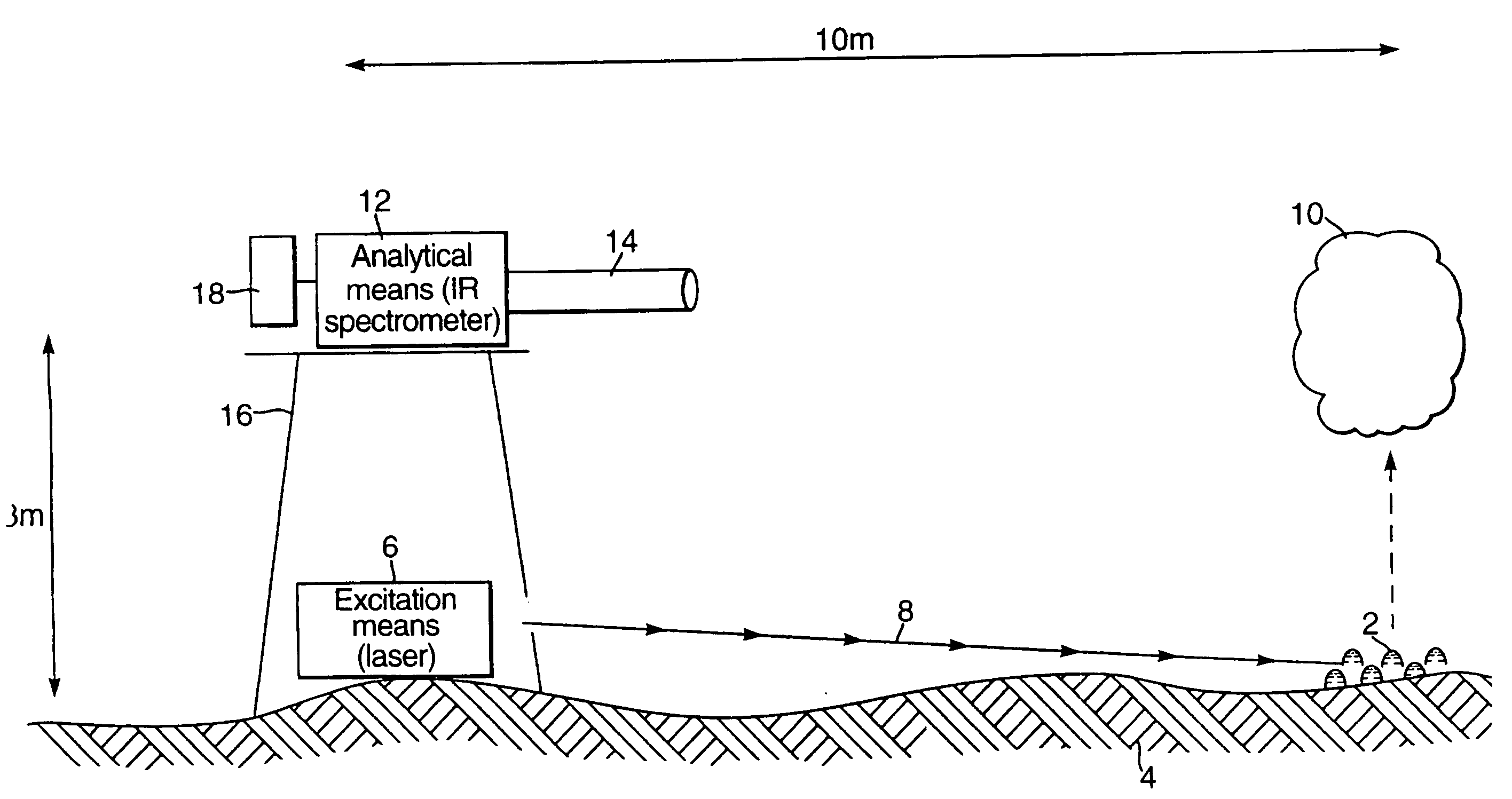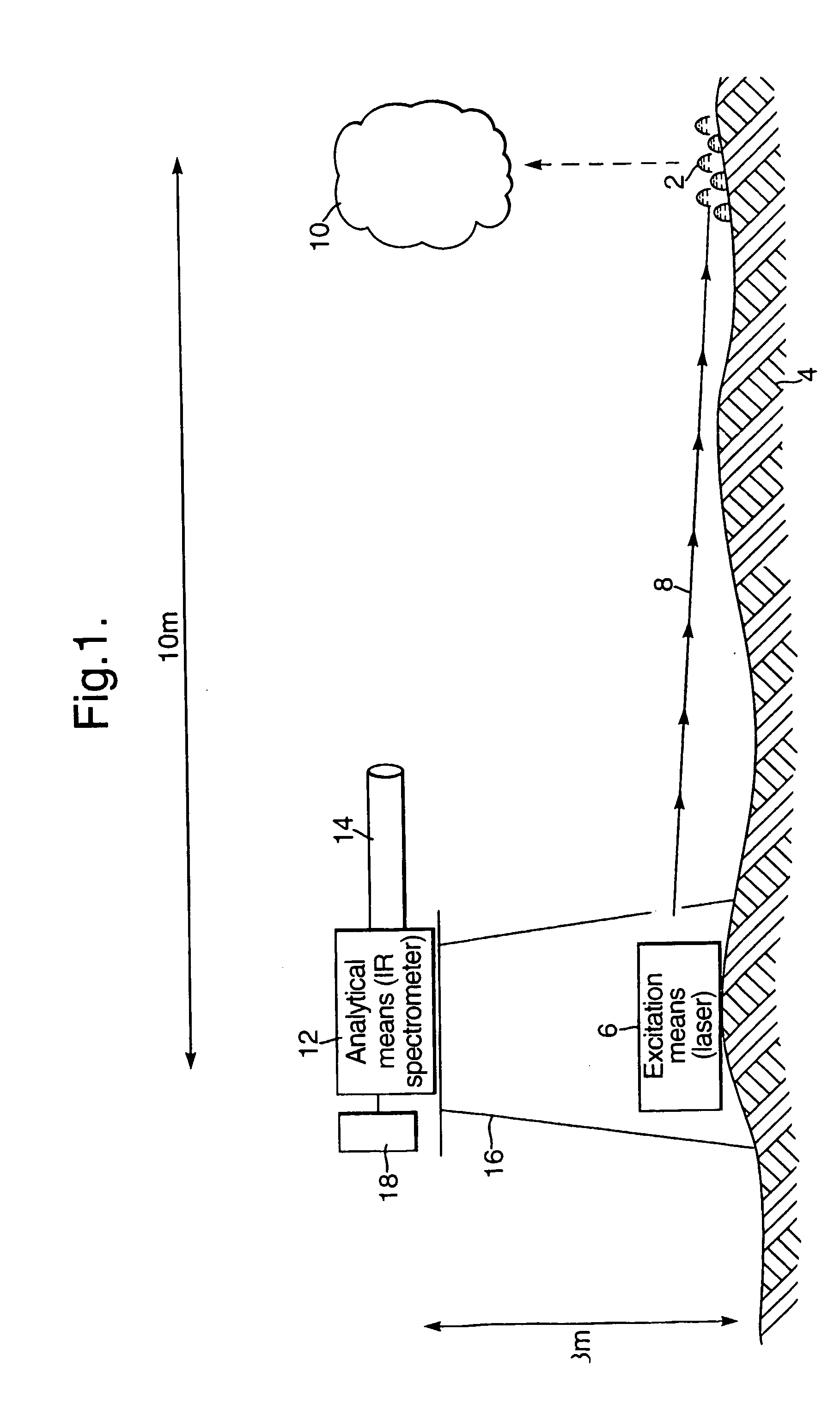Method and apparatus for stand-off chemical detection
a stand-off chemical and detection method technology, applied in the field of stand-off chemical detection methods and equipment, can solve the problems of unsuitable methods for field use to identify unknown and potentially hazardous materials, sampling and analysis poses a real risk to the personnel involved, and pollutes the environment and is toxic to land or water
- Summary
- Abstract
- Description
- Claims
- Application Information
AI Technical Summary
Benefits of technology
Problems solved by technology
Method used
Image
Examples
example 1
[0061] A continuous wave CO2 laser (Edinburgh Instruments), operating at 9.6 μm, with an output power of 4.5 W, was situated approximately 1 m away from a droplet of liquid methyl salicylate of approximate diameter 10 mm. The laser beam was directed using appropriate mirrors and focussed on to the droplet using a lens made of zinc selenide and then used to vaporise the sample to create a vapour plume directly above the droplet. The infrared emission spectrum of the vapour plume was then measured using a MEDAC AM Fourier Transform Infrared (FTIR) spectrometer, with 1 m focal length collection lens placed in front of the open emission port, situated 1 m away from the vapour and positioned at right angles to the laser. The infrared spectrum was obtained by operating the FTIR at between 1 and 20 scans per second and using a suitable resolution of 1 to 32 cm−1. The collected spectra were compared with library spectra to provide positive identification of the liquid methyl salicylate from...
example 2
[0062] A continuous wave CO2 laser (Edinburgh Instruments), operating at 9.25 μm, with an output power of 10 W, was situated approximately 5 m away from a droplet of liquid chemical warfare agent of approximate diameter 10 mm. The laser beam was directed unfocussed on to the droplet and then used to vaporise the sample to create a vapour plume directly above the droplet. The infrared emission spectrum of the vapour plume was then measured using a MIDAC AM Fourier Transform Infrared (FTIR) spectrometer, fitted with a Cassegrain telescope with a diameter of 25 cm focused to infinity, situated 5 m away from the vapour and positioned alongside the laser. The infrared spectrum was obtained by operating the FTIR at between 1 and 20 scans per second and using a suitable resolution of 1 to 32 cm−1. The collected spectra were compared with library spectra to provide positive identification of the individual components of the liquid chemical warfare agent mixture.
PUM
 Login to View More
Login to View More Abstract
Description
Claims
Application Information
 Login to View More
Login to View More - R&D
- Intellectual Property
- Life Sciences
- Materials
- Tech Scout
- Unparalleled Data Quality
- Higher Quality Content
- 60% Fewer Hallucinations
Browse by: Latest US Patents, China's latest patents, Technical Efficacy Thesaurus, Application Domain, Technology Topic, Popular Technical Reports.
© 2025 PatSnap. All rights reserved.Legal|Privacy policy|Modern Slavery Act Transparency Statement|Sitemap|About US| Contact US: help@patsnap.com


